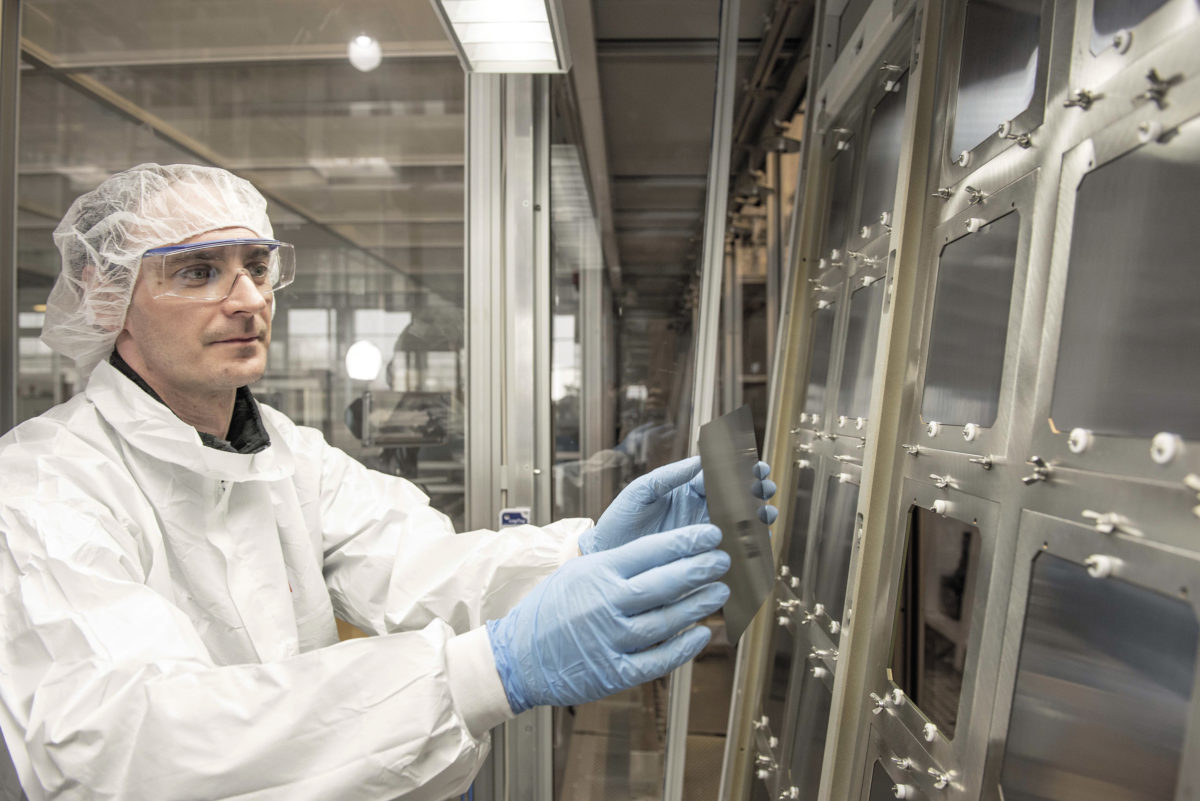From pv magazine global
The European Perovskite Initiative (EPKI) unites the major European institutions involved in solar energy research, including the Benelux-based Solliance – which has the Netherlands’ TNO and Belgium’s Imec among its members; Switzerland’s École Polytechnique Fédérale de Lausanne (EPFL); France’s Institut National de l’Energie Solaire; Germany’s Fraunhofer ISE; Italy’s Consiglio Nazionale delle Ricerche; specialist Oxford PV; and the University of Oxford; and Latvian company Saules Energijas Ieleja,
“This European initiative is being animated by Ronn Andriessen, director at Solliance, and consultant Louis Huber, from Greensquare,” the consortium said in its first press release.
Huber told pv magazine the first goal of the network is a European perovskite white paper. “Each institute has its roadmap for perovskites PV but we would like to convey the essentials through a common roadmap,” he said.
Asked when perovskite technologies will enter commercial production, Huber admitted only assumptions could be made at this point. “From three, four to five years’ time,” he said. “It is hard to have a clear line [with] different applications there as well. Also, process maturity, market readiness and market readiness acceptance are … three different steps and some are hard to predict.”
Diverse lines of research
According to Huber, the biggest challenge for perovskite is the profusion of parallel research topics, although stability-related issues are also a recurring problem.
The new body wants to support all kinds of next generation PV industrial initiatives by creating joint research programs and defining its white paper, which “could be ready somewhere in June or mid-July”, according to Huber.
Almost all the consortium’s members have already achieved efficiency records for different kinds of perovskite-related solar technology.
Solliance, for example, achieved 21.5% efficiency for a perovskite CIGS cell, 26.3% efficiency on a transparent perovskite solar cell combined with a crystalline silicon solar cell and 14.5% conversion efficiency for large-area perovskite modules.
Milestones
Imec obtained 24.6% efficiency for a tandem CIGS cell based on perovskite, 27.1% on a perovskite-silicon tandem cell, 23.9% on a 4cm² tandem perovskite-silicon module and 12.4% efficiency for a perovskite-based PV module.
The EPFL developed a 25.2% efficient perovskite-silicon tandem cell, has proposed the development of standard measurements for perovskite aging, and has conducted research into stabilizing perovskite solar cells with guanidinium.
U.K.-German perovskite specialist Oxford PV hit 27.3% efficiency on a 1cm² tandem cell and the company, with Oxford University, in September announced a roadmap to reach a perovskite cell efficiency of around 37% as well as to improve long-term stability.
This content is protected by copyright and may not be reused. If you want to cooperate with us and would like to reuse some of our content, please contact: editors@pv-magazine.com.









By submitting this form you agree to pv magazine using your data for the purposes of publishing your comment.
Your personal data will only be disclosed or otherwise transmitted to third parties for the purposes of spam filtering or if this is necessary for technical maintenance of the website. Any other transfer to third parties will not take place unless this is justified on the basis of applicable data protection regulations or if pv magazine is legally obliged to do so.
You may revoke this consent at any time with effect for the future, in which case your personal data will be deleted immediately. Otherwise, your data will be deleted if pv magazine has processed your request or the purpose of data storage is fulfilled.
Further information on data privacy can be found in our Data Protection Policy.